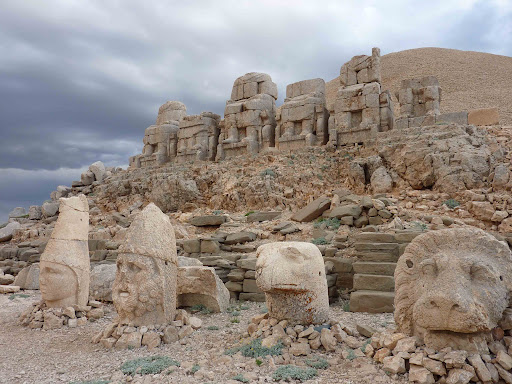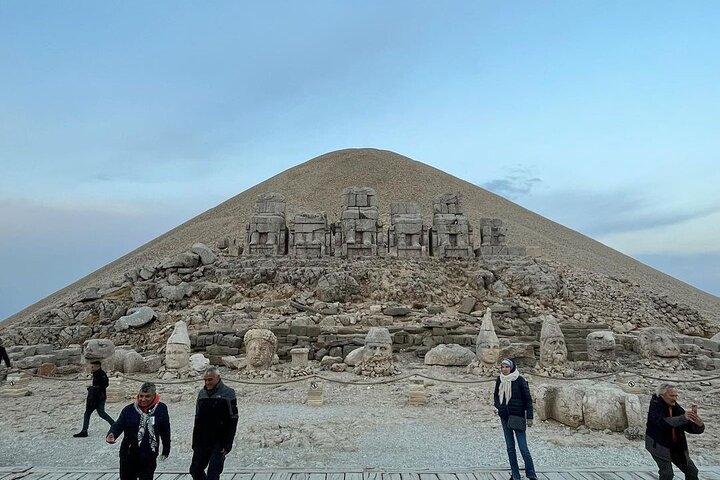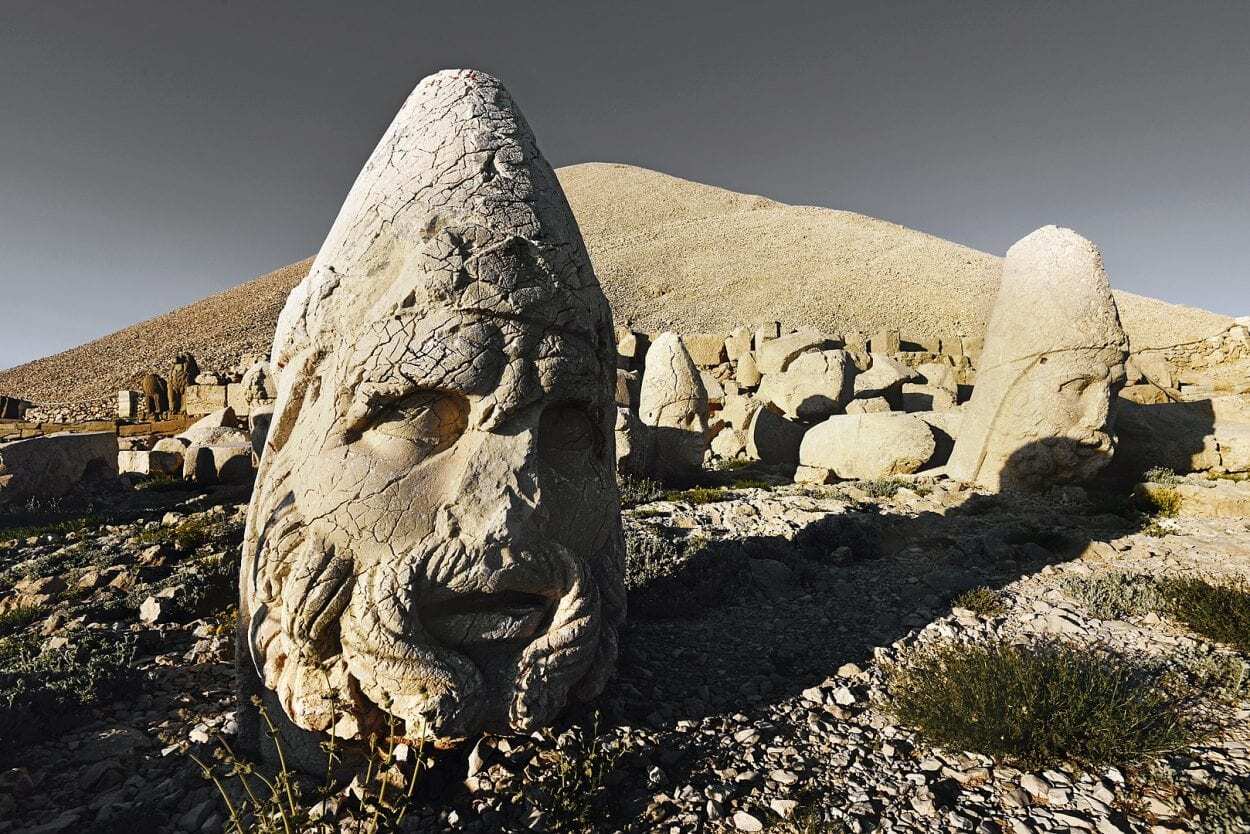Mount Nemrut: A Forgotten Kingdom’s Monument to the Gods and the Stars

Rising over 2,100 meters above sea level in southeastern Turkey, Mount Nemrut holds one of the most extraordinary archaeological sites of the ancient world. At its summit lies a tomb-sanctuary built by King Antiochus I of Commagene, who ruled between 69 and 34 BCE. This monumental complex was designed as a sacred resting place and a tribute to both gods and kings.
Scattered across the mountaintop are gigantic stone heads and thrones, once part of seated statues over 8 meters tall. These statues depict a fusion of Greek and Persian deities—Zeus, Hercules, Apollo—alongside the king himself, symbolizing Antiochus’s vision of a divine royal lineage that merged Eastern and Western cultures. Towering eagles and lions flank the deities, adding a mythic aura to the site.
 At the center of the complex is a massive tumulus—an artificial burial mound of crushed rock—believed to conceal the king’s final resting place. Despite numerous excavations, the exact location of the tomb remains undiscovered, deepening the site’s mystery. Was it meant to be found, or forever hidden beneath the stones as part of an eternal celestial shrine?
At the center of the complex is a massive tumulus—an artificial burial mound of crushed rock—believed to conceal the king’s final resting place. Despite numerous excavations, the exact location of the tomb remains undiscovered, deepening the site’s mystery. Was it meant to be found, or forever hidden beneath the stones as part of an eternal celestial shrine? 
Mount Nemrut stands as a rare testament to cultural syncretism, where Greek idealism meets Persian symbolism. Antiochus’s ambitious vision was not only religious but political—asserting Commagene’s importance as a bridge between powerful empires. The inscriptions and sculptures at the site still puzzle scholars and captivate visitors with their coded messages and symbolic grandeur.